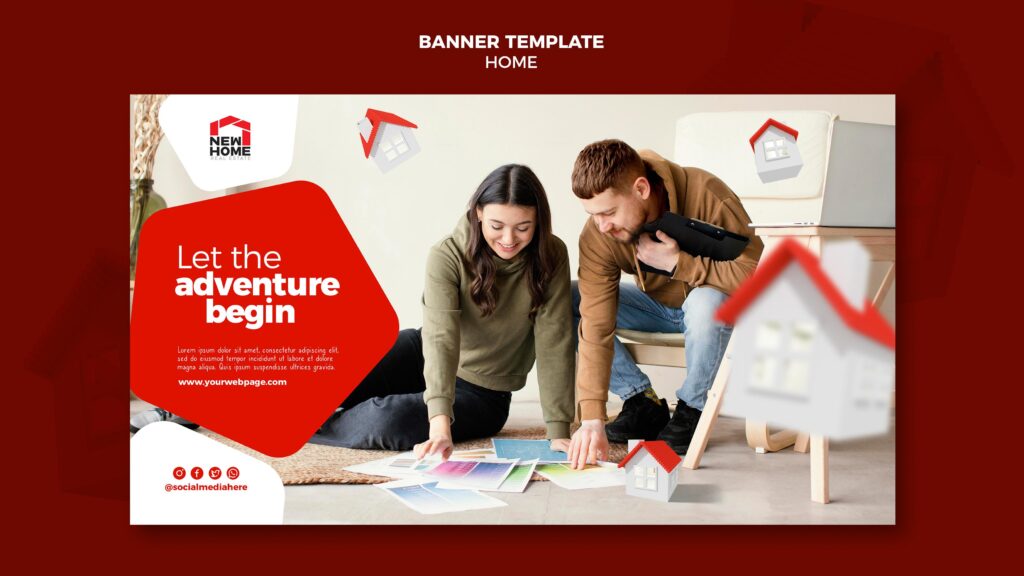It is one of the most persistent and costly paradoxes in the luxury real estate sector. A development firm invests heavily in a visually stunning website, complete with breathtaking architectural renders, cinematic drone footage, and eloquent descriptions of an unparalleled lifestyle. It is, by all accounts, a beautiful digital brochure. Yet, it sits in silence. The analytics report shows a steady stream of traffic, but the inquiry forms remain empty and the phone lines are quiet. The digital showroom is open for business, but no one is speaking to the sales team.
This is not a failure of branding or an indication of low market interest. It is a fundamental failure to distinguish between aesthetics and experience. Many firms mistakenly believe that a beautiful User Interface (UI) is synonymous with an effective User Experience (UX). They have created a digital masterpiece that is beautiful to behold but frustrating to use, effectively building a velvet rope in front of their own sales office. The result is a significant drain on marketing capital, where even the most effective real estate digital marketing campaigns fail to deliver a return.
The solution lies in shifting focus from passive design to active, data-driven optimization. It requires adopting the twin disciplines of User Experience (UX) and Conversion Rate Optimization (CRO). This guide serves as a strategic audit checklist for real estate leaders to diagnose the critical UX and CRO failures that are suppressing lead generation and provides an actionable framework to transform your website from a static portfolio into a high-performance lead generation engine.
The Foundational Flaw: Mistaking Aesthetics for Experience
Before we proceed to the checklist, it is imperative to define our terms from a business perspective.
- User Experience (UX) is not simply about how your website looks; it is about how it feels to use. Is the journey from discovering a property to making an inquiry intuitive, frictionless, and reassuring? Does the website anticipate the user’s needs and answer their questions before they even have to ask? For the discerning high-net-worth individual, a clunky, slow, or confusing experience is a direct reflection of your brand’s attention to detail—or lack thereof.
- Conversion Rate Optimization (CRO) is the science and art of systematically improving your website to increase the percentage of visitors who take a desired action—in this case, becoming a qualified lead. It is a data-driven process of identifying points of friction and testing solutions to eliminate them.
It is critical to understand that these two disciplines are the bedrock upon which all other marketing efforts are built. Even the most sophisticated real estate ppc agency cannot deliver a positive ROI if they are directing high-quality, expensive traffic to a landing page that is not engineered to convert. A high Cost Per Lead (CPL) is very often not a traffic problem, but a website conversion problem.
The Luxury Real estate UX & CRO Audit Checklist
Use the following four pillars to conduct a high-level audit of your digital property and identify critical areas for improvement.
Audit Area #1: Website Performance & The Technical Foundation
The subconscious first impression of your brand is not made by your logo, but by your website’s load time. Performance is a foundational element of luxury UX.
- The “First Impression” Test: Page Load Speed
A slow-loading website is the digital equivalent of a locked door on your sales office. In the luxury space, patience is thin. A user expecting a premium experience will not wait more than a few seconds for your high-resolution images and virtual tours to load. Use tools like Google’s PageSpeed Insights to benchmark your performance. Every millisecond counts and directly impacts your bounce rate—the percentage of users who leave after viewing only one page.
- The Mobile-First Imperative
Your target audience—busy executives, investors, and high-net-worth individuals—are often conducting initial research on their mobile devices during moments of downtime. Your website must not just be “mobile-responsive”; it must be “mobile-first.” This means the experience on a smartphone is not a compromised version of the desktop site, but a thoughtfully designed journey in its own right. Are virtual tours seamless and intuitive on a touchscreen? Are forms easy to fill out with a thumb? A poor mobile experience is a direct signal that your brand is not in sync with the habits of its target clientele.
- Technical Integrity and Security
Foundational trust signals are non-negotiable. Ensure your entire website is secured with HTTPS. Routinely check for broken links or missing images. These small technical errors may seem minor, but to a discerning user, they suggest a lack of maintenance and professionalism, eroding the very trust you need to build. A proficient digital marketing company for real estate will always begin with a thorough technical audit to ensure this foundation is solid.
Audit Area #2: User Journey & Navigation Clarity
A luxury experience is defined by its effortlessness. Your website’s navigation should be so intuitive that the user never has to think about where to go next.
- The “Five-Second” Test
Can a first-time visitor understand who you are, what you offer, and where to find relevant information within five seconds of landing on your homepage? Your Unique Value Proposition should be immediately apparent. If a user has to hunt for your property listings or figure out what city you operate in, your navigation has already failed.
- Simplified, Logical Navigation
Resist the temptation to create a complex menu with dozens of options. A streamlined navigation bar (e.g., “Our Properties,” “About Us,” “Lifestyle,” “Contact”) provides a clear and confident path. The user journey should be logical. For instance, from a specific property page, is there a clear and unmissable button to “Schedule a Viewing” or “Download Brochure”?
- Intelligent Search Functionality
For portfolios with multiple listings, the search filter is a critical UX component. Basic filters are insufficient for a luxury audience. Your search functionality should allow users to filter by nuanced, high-value features such as “Sea View,” “Private Elevator Access,” “Architect Name,” or specific amenities. This demonstrates that you understand the specific desires of your clientele.
Audit Area #3: The Conversion Architecture
Every element on your page should be purposefully designed to guide the user toward taking action. This is the core of CRO.
- The Art of the Call-to-Action (CTA)
Are your CTAs passive and generic (“Submit,” “Click Here”), or are they active and benefit-driven (“Request a Private Viewing,” “Receive the Exclusive E-Brochure”)? The language of your CTAs should be confident and aligned with the premium nature of your offering. Their design should be visually prominent, using a contrasting color that draws the user’s eye.
- Frictionless Lead Capture Forms
The single greatest cause of conversion abandonment is an overly long or complex lead form. For an initial inquiry, you do not need a prospect’s entire life story. Every additional field you require is a point of friction that will cause a percentage of users to give up. Start by asking for the absolute essentials: Name, Email, and Phone Number. You can gather more information during the follow-up conversation.
- Deploying Trust Signals
Trust is the currency of luxury real estate. Your website must be architected to build it at every turn. This includes:
- High-Resolution Team Photos: Show the professional, experienced team behind the project.
- Client Testimonials: Feature quotes from satisfied, high-profile clients.
- Media & Awards: Display logos of prestigious publications that have featured your properties or awards you have won.
- Clear Contact Information: A prominent and easily accessible phone number and physical address are crucial trust indicators.
Audit Area #4: The Immersive and Emotional Experience
Finally, a luxury website must transcend functionality and create an emotional connection. It must make the user feel the prestige of the property.
- The Quality of Visual Assets
There is no excuse for anything less than exceptional photography and videography. Grainy images, poor lighting, or distorted photos taken on a phone will instantly devalue a multi-crore property. Every visual asset must be professionally produced and optimized for the web to convey the true quality and atmosphere of the space.
- The Virtual Tour Experience
The virtual tour is often the centerpiece of a modern luxury property website. The UX of the tour itself is critical. Is it a seamless, high-definition experience, or is it a clunky, low-resolution afterthought? Does it load quickly? Are the controls intuitive? The tour should feel like a premium, guided experience, not a frustrating technical challenge.
From Digital Brochure to Digital Sales Consultant
If your luxury real estate website is attracting traffic but failing to generate leads, it is likely succeeding as a beautiful digital brochure but failing in its most critical role: as a digital sales consultant. The disconnect almost always resides in the chasm between a visually appealing interface and a strategically engineered user experience. The solution is to adopt a rigorous, data-driven CRO mindset—to continuously analyze, test, and refine every element of your site with the singular goal of making the customer journey more intuitive, reassuring, and compelling.
Fixing these foundational UX and CRO issues is the most direct and sustainable way to improve the performance of all your real estate digital marketing services. It ensures that the high-quality traffic driven by your real estate performance marketing agency is not wasted, but is instead welcomed, nurtured, and converted.
If this audit has revealed potential gaps in your digital experience, it’s time for a conversation. Contact us for a complimentary, in-depth UX and CRO analysis of your website.
Frequently Asked Questions
1. Our website was professionally designed and looks beautiful. Why would it still have a “bad UX”?
This is the critical distinction between User Interface (UI) and User Experience (UX). A beautiful design (UI) is about aesthetics—professional photography, elegant fonts, and a premium color palette. A good UX is about functionality and feeling—is the site fast, intuitive, and frictionless for the user? Your site can be visually stunning but have a bad UX if it loads slowly, the navigation is confusing, the virtual tours are clunky on mobile, or the contact forms are too long. For a luxury audience, a frustrating experience, no matter how beautiful, undermines the brand’s promise of quality and attention to detail.
2. What kind of improvement in lead generation can we realistically expect from a professional UX and CRO audit and implementation?
While every website is different, it is not uncommon for firms to see a 20% to 50% increase (or more) in lead conversions after a thorough UX and CRO project. The improvement is often dramatic because the process targets the points of greatest friction. By fixing issues like slow page speed, simplifying forms, and clarifying calls-to-action, you are converting more of the valuable traffic you are already receiving, leading to a direct and significant impact on your lead volume without necessarily increasing your ad spend.
3. What is “Conversion Rate Optimization (CRO),” and is it a one-time project or an ongoing process?
Conversion Rate Optimization is a systematic, data-driven process of improving your website to increase the percentage of visitors who become leads. It is not a one-time project but an ongoing cycle of analysis, hypothesis, testing, and refinement. A CRO professional will analyze user behavior data (like heatmaps and session recordings), form a hypothesis (e.g., “Changing the CTA button from ‘Submit’ to ‘Request a Private Tour’ will increase conversions”), A/B test the change, and implement the winning version. This continuous process ensures your website is always evolving to meet customer needs and maximize performance.
4. How does improving our website’s UX affect the performance of campaigns run by our real estate ppc agency?
The effect is direct and profound. Your website’s UX is a critical factor in your Google Ads Quality Score. A fast, relevant, and engaging landing page results in a higher Quality Score, which Google rewards with lower Cost Per Click (CPC) and better ad positions. Furthermore, a high-converting website (good UX/CRO) means a greater percentage of the expensive clicks you pay for turn into leads. This dramatically lowers your Cost Per Lead (CPL) and increases your overall Return on Ad Spend (ROAS), making your entire PPC budget more efficient and profitable.
5. For a luxury audience, what are the most critical “trust signals” a website must have?
A luxury audience is highly discerning and looks for signals of credibility and professionalism. Beyond the quality of the property itself, the most critical trust signals on your website include:
- A Professional “About Us” Page: Featuring high-resolution photos and detailed biographies of the key leadership and development team.
- High-Profile Testimonials: Quotes or video testimonials from satisfied, influential clients.
- Media Mentions & Awards: A dedicated section displaying the logos of prestigious publications or industry awards that have recognized your projects.
- Complete Transparency: Easily accessible contact information, a physical office address, and clear privacy policy and terms of service.
- A Secure Website (HTTPS): A secure, encrypted connection is a non-negotiable technical standard that signals professionalism and data security.
6. What is the single biggest mistake you see on luxury real estate landing pages that kills conversions?
The single most common and damaging mistake is an overly long and demanding lead capture form. For an initial expression of interest in a multi-crore property, asking for more than a name, email, and phone number creates unnecessary friction. Prospects in the luxury segment value their time and privacy. Forcing them to fill out extensive fields about their budget, timeline, or current address before a conversation has even begun is a primary cause of page abandonment. The goal of the form is to start a conversation, not to conduct a full client qualification.
7. How do we justify the investment in UX and CRO to our board or investors?
You justify the investment by framing it in clear financial terms, not design terms. The business case is:
- Maximizing Existing Marketing Spend: “We are currently spending X amount on a real estate performance marketing agency to drive traffic. By improving our conversion rate by just 20%, we can generate 20% more leads from the exact same budget, directly improving our ROAS.”
- Reducing Financial Waste: “Our analytics show a 50% bounce rate on our key landing pages. This means we are effectively throwing away half of our ad spend. A UX/CRO project is an investment to plug this financial leak.”
- Increasing Asset Value: “Our website is a core business asset. Investing in its performance and user experience is akin to renovating a physical property to increase its value and effectiveness.”
8. Why is a “mobile-first” approach more important than just “mobile-responsive” for our clientele?
“Mobile-responsive” means your desktop site shrinks to fit a mobile screen, but often some functionality is compromised. “Mobile-first” means the experience is designed from the ground up specifically for the mobile user. For your high-net-worth clientele, who often conduct initial research on their phones between meetings or while traveling, this distinction is critical. A mobile-first approach ensures that resource-heavy elements like virtual tours are optimized for mobile connections, navigation is thumb-friendly, and forms are simple to complete on a small screen. It respects their time and their device of choice, reflecting the seamless, premium experience your brand represents.
9. What does the process of a UX/CRO audit from a digital marketing company for real estate typically involve?
A professional UX/CRO audit is a multi-step, data-driven process:
- Data Analysis: A deep dive into your website analytics (e.g., Google Analytics) to identify pages with high drop-off rates and poor performance.
- Behavioral Analysis: Using tools like heatmaps and session recordings to visually understand how users are actually interacting with your pages—where they click, how far they scroll, and where they get stuck.
- Heuristic Evaluation: An expert walkthrough of your site to identify common usability issues based on established UX principles.
- Technical Audit: An analysis of site speed, mobile usability, and other technical factors that impact user experience.
- Actionable Recommendations: The final deliverable is not just data, but a prioritized list of specific, actionable recommendations for A/B testing and implementation to improve your conversion rates.
10. Our virtual tours are very high-resolution and therefore slow to load. What is the trade-off between visual quality and website performance?
This is a critical trade-off, but it can be managed with smart technology. You should not have to sacrifice quality. The solution lies in optimization:
- Image & Video Compression: Using modern formats (like WebP for images) and compression tools that significantly reduce file size without a noticeable loss in visual quality.
- Content Delivery Network (CDN): A CDN stores your large files on servers around the world, so they are delivered to the user from a server that is geographically closer to them, dramatically speeding up load times.
- Lazy Loading: This technique loads images and videos only as the user scrolls down the page and they become visible, rather than loading the entire page at once. This ensures the initial page load is very fast.
A skilled digital marketing services for real estate provider can implement these technical solutions to deliver both a stunning visual experience and blazing-fast performance.



